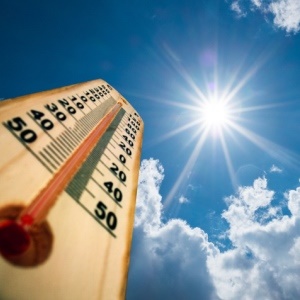
The concept is simple, yet elegant: Use fever readings from thermometers to create a database that can show public health officials whether physical distancing is curbing the spread of coronavirus.
A San Francisco medical technology company has been doing just that, and the latest news is heartening: The number of fever readings have dipped as Americans stayed at home and away from each other.
Up to 250 million people in 29 states are now under some collection of physical distancing measures, the New York Times reported.
To see if those measures were making any difference, Kinsa Health used data from its 1 million thermometers connected to the internet to create a national map of fever levels on 22 March. Within one day, the company spotted the downward trend in fevers. Shortly after that, data from health officials in Washington state and New York state started showing the same trajectory, the Times reported.
Fevers dropping all over the country
How does it work? The thermometers upload individual temperature readings to a database. Any symptoms can also be typed into a cellphone app after taking your temperature. The app offers basic advice on whether medical attention should be sought, the newspaper said.
To target possible coronavirus cases, Kinsa recently tweaked its software to spot spikes of "atypical fever" that do not correlate with the flu and are likely due to coronavirus infection, the Times reported.
Last Wednesday, the company's live map showed fevers holding steady or dropping almost universally across the country, with two notable exceptions.
One was in a broad swath of New Mexico, where the governor had just issued stay-at-home orders because of a spike in cases.
The second was in a ring of parishes surrounding New Orleans. That was presumably caused by the explosion of infections in New Orleans, which state officials have attributed to Mardi Gras crowds, the Times reported.
But by last Friday, fevers in every county in the country were on a downward trend, depicted in four shades of blue on the map, according to the Times.
Sacrifices are helping
"I'm very impressed by this," said Dr William Schaffner, a preventive medicine expert at Vanderbilt University in Nashville, Tennessee. "It looks like a way to prove that physical distancing works.
"But it does shows that it takes the most restrictive measures to make a real difference," he told the Times.
In New York City, reports of fevers steadily rose during early March, despite a declaration of emergency and an order that public gatherings be restricted to less than 500 people.
The turning point appeared on 16 March, the day schools were closed. Bars and restaurants were closed the next day, and a stay-at-home order took effect on March 20. Just three days later, new fevers in Manhattan were below their March 1 levels, the company showed.
Last Friday, New York state's own data, based on hospitalisation rates, uncovered the same trend, the Times reported.
Shown the Kinsa data, New York Health Commissioner Dr Howard Zucker called it "a great example of technology being able to show what we think we're experiencing – and it's consistent with our data."
Inder Singh, founder of Kinsa, said, "People need to know their sacrifices are helping."
READ | What is ‘herd immunity’ and can it really solve the coronavirus pandemic?
READ | My story of social distancing: It’s okay to not be okay right now
READ | Avoiding fear, anxiety while you self-quarantine
Image credit: iStock




 Publications
Publications
 Partners
Partners















